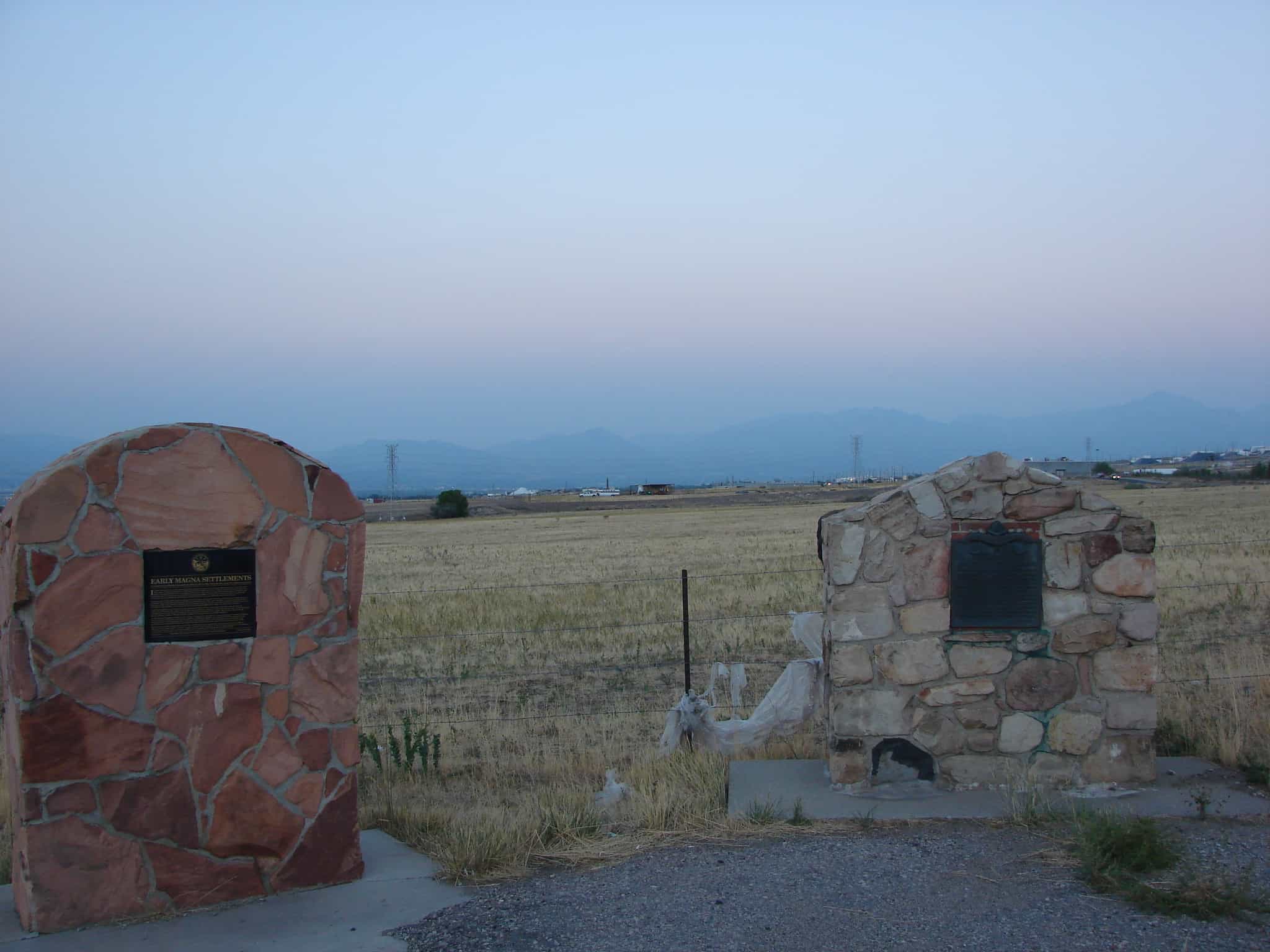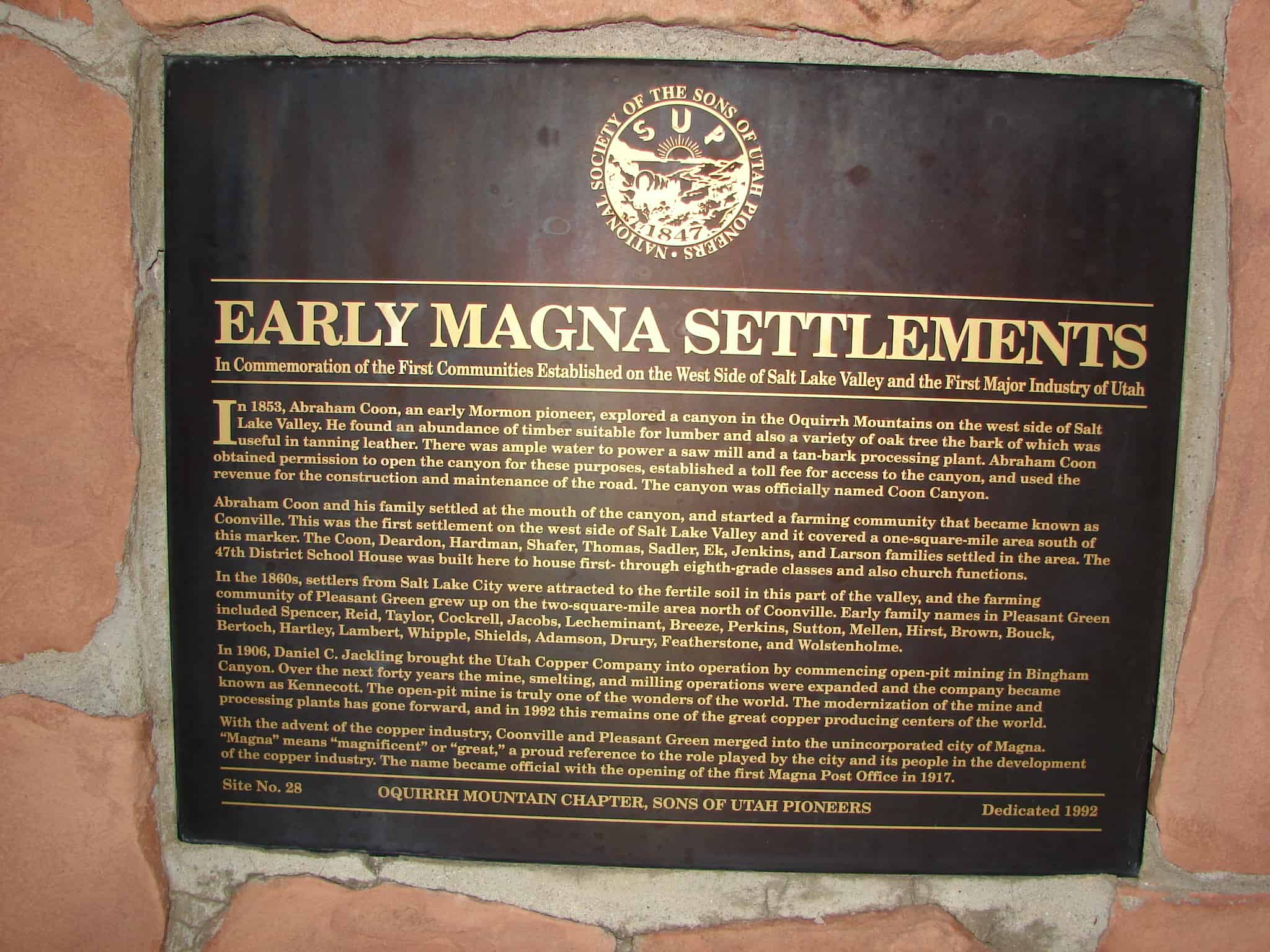Tags

EARLY MAGNA SETTLEMENTS
In Commemoration of the First Communities Established on the West Side of Salt Lake Valley and the First Major Industry of Utah In 1853 Abraham Coon, an early Mormon pioneer, explored a canyon in the Oquirrh Mountains on the west side of Salt Lake Valley. He found an abundance of timber suitable for lumber and also a variety of oak tree the bark of which was useful in tanning leather. There was ample water to power a saw mill and a tan-bark processing plant. Abraham Coon obtained permission to open the canyon for these purposes, established a toll fee for access to the canyon, and used the revenue for the construction and maintainance of the road. The canyon was officially named Coon Canyon. Abraham Coon and his family settled at the mouth of the canyon, and started a farming community that became known as Coonville. This was the first settlement on the west side of Salt Lake Valley and it covered a one-square-mile area south of this marker. The Coon, Deardon, Hardman, Shafer, Thomas, Sadler, Ek, Jenkins, and Larson families settled in the area. The 47th District School House was built here to house first- through eighth-grade classes and also church functions. In the 1860s, settlers from Salt Lake City were attracted to the fertile soil in this part of the valley, and the farming community of Pleasant Green grew up on the two-square-mile area north of Coonville. Early family names in Pleasant Green included Spencer, Reid, Taylor, Cockrell, Jacobs, Lecheminant, Breeze, Perkins, Sutton, Mellen, Hirst, Brown, Bouck, Bertoch, Hartley, Lambert, Whipple, Shields, Adamson, Drury, Featherstone, and Wolstenholme. In 1906, Daniel C. Jackling brought the Utah Copper Company into operation by commencing open-pit mining in Bingham Canyon. Over the next forty years the mine, smelting, and milling operations were expanded and the company became known as Kennecott. The open-pit mine is truly one of the wonders of the world. The modernization of the mine and processing plants has gone forward, and in 1992 this remains one of the great copper producing centers of the world. With the advent of the copper industry, Coonville and Pleasant Green merged into the unincorporated city of Magna. “”Magna” means “magnificent” or “great,” a proud reference to the role played by the city and its people in the development of the copper industry. The name became official with the opening of the first Magna Post Office in 1917.
See other historic markers in the series on this page for SUP Markers.







This marker is located right next to DUP Marker #319.

Pingback: Relief Society Granary | JacobBarlow.com
Pingback: Magna, Utah (Formerly “Pleasant Green” ) | JacobBarlow.com